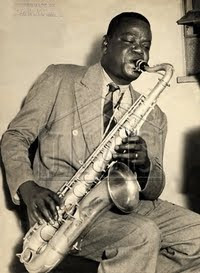Movimento - Brasilian Movement
 Being interested in Brasilian music tradition, I was delighted to have the opportunity to listen to the above shown cd by Nelson Latif, 'Movimento'. The cd was recorded in Amsterdam February-October 2006 and released 2007, and it was produced by Nelson Latif as his first solo issue. Nelson Latif is from São Paulo, Brazil, but has lived in Amsterdam, Holland, since the 1990s and taken part in various musical projects as a musician, both in Holland and Brazil.
Being interested in Brasilian music tradition, I was delighted to have the opportunity to listen to the above shown cd by Nelson Latif, 'Movimento'. The cd was recorded in Amsterdam February-October 2006 and released 2007, and it was produced by Nelson Latif as his first solo issue. Nelson Latif is from São Paulo, Brazil, but has lived in Amsterdam, Holland, since the 1990s and taken part in various musical projects as a musician, both in Holland and Brazil.The music on the cd is a great listening experience, as it blends many different elements of music tradition. You can hear fragments reminding of be bop frases mixed with traditional choro music, even flamenco inspiration and Middle-East music styles incorporating classical Indian raga - a true cross-over and World-Music project. Click on picture above to see tracklist and listen to audio examples from the cd in the Discography menu.
 Nelson Latif, who plays acoustic guitar and cavaquinho, formed his musical identity in the jazz scene of 1980's São Paulo. With roots in choro and jazz, Latif merges Brazilian styles and a classical guitar technique with diverse musical influences. He started his studies at age fourteen. During the 90's he moved to Amsterdam and started performing on the cavaquinho, an instrument that has since become his trademark.
Nelson Latif, who plays acoustic guitar and cavaquinho, formed his musical identity in the jazz scene of 1980's São Paulo. With roots in choro and jazz, Latif merges Brazilian styles and a classical guitar technique with diverse musical influences. He started his studies at age fourteen. During the 90's he moved to Amsterdam and started performing on the cavaquinho, an instrument that has since become his trademark. Latif
First tune played by Choramundo feat. Nelson Latif (guitar), Joeri de Graaf (guitar) Praful (bansuri and saxophone), Pablo Nahar (double Bass), Jotta Erre (percussion) is called 'Brujeria' recorded live at the International Jazz Festival in Recife, Brazil, march 2006.
Jo



.png)





.jpg)








